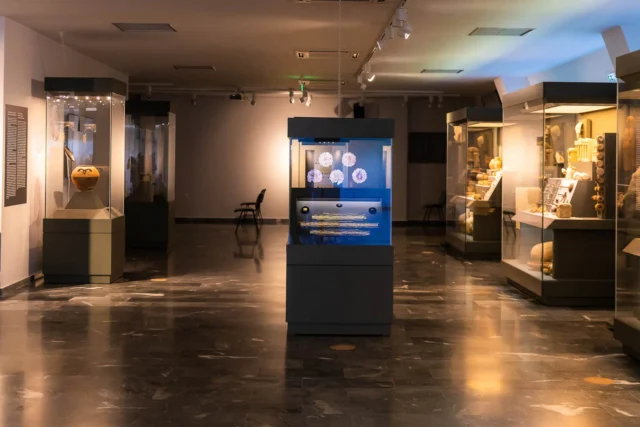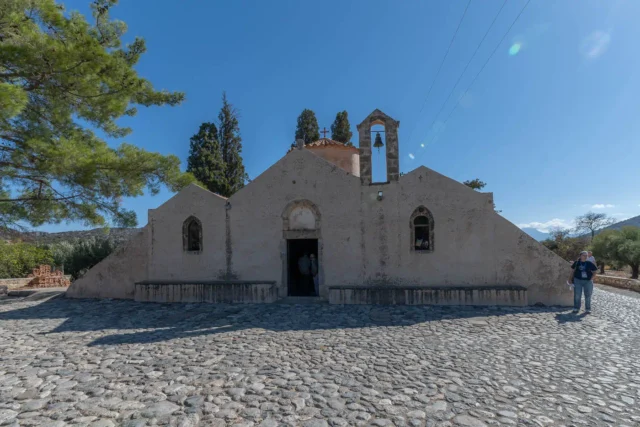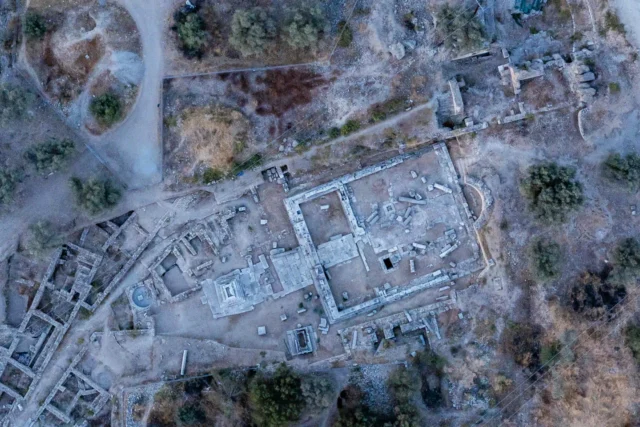
Gortyna archaeological site
8:00 am - 7:00 pm
Gortyna, located on Crete's Mesara Plain, was a major ancient city second only to Knossos. Inhabited since the Neolithic period (7000 BC), it flourished during the Bronze Age under Minoan and Mycenaean civilizations. By the Archaic and Classical periods, Gortyna was a powerful city-state, sometimes allied with, sometimes rivaling, Knossos. In 67 BC, Romans conquered Crete, making Gortyna capital of the province of Crete and Cyrenaica. The city thrived under Roman rule, with new infrastructure like the Praetorium, amphitheater, and Sanctuary of the Egyptian Gods.
A key discovery is the Gortyn code, the oldest known complete ancient Greek law, offering insights into 5th century BC social, economic, and legal structures. Gortyna embraced Christianity during the Byzantine era, evidenced by the Basilica of Saint Titus. The Arab conquest in the 9th century AD led to its decline. Today, Gortyna is a major archaeological site with ongoing excavations. Key sites include the Praetorium, Odeon (housing the Gortyn code inscription), amphitheater, Pythion Theater, Sanctuary of the Egyptian Gods, Basilica of Saint Titus, and Acropolis.

Agia Triada
8:30 am - 3:30 pm
Agia Triada, in Crete's Messara Plain, presents a Minoan settlement with a notable Royal Villa, smaller than Knossos or Phaistos, but showcasing Minoan architecture. The site's history spans from Early Minoan to Postpalatial, with Mycenaean influence after 1450 BC. Discoveries include Linear A tablets, the Hagia Triada sarcophagus, Chieftain's Cup, and Boxer Rhyton, highlighting administrative and funerary practices. Burial sites range from tholos to chamber tombs, reflecting cultural evolution. A tripartite shrine indicates religious significance. The site's layers reveal Minoan daily life, economic functions, and interactions with the broader Mediterranean world, with artifacts exhibited in the Messara Museum.
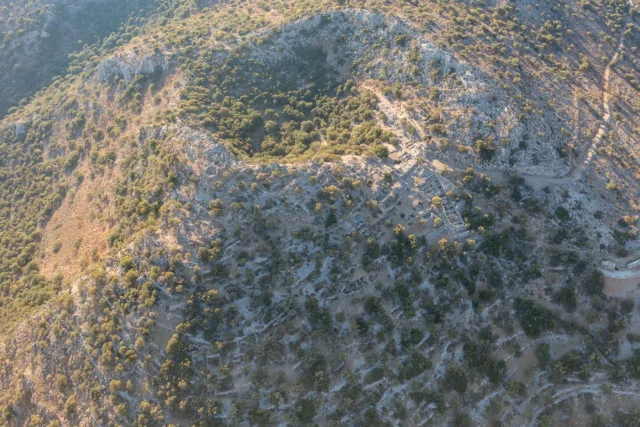
Ancient Lato
8:30 am - 3:30 pm
Lato, an ancient city in Crete, reached its peak after the Dorian arrival. Named after the goddess Leto, Lato was strategically located on a hilltop overlooking the Mirabello Gulf. The city was heavily fortified, with strong walls, gates, and towers. Lato was one of the most powerful city-states in ancient Crete, with a well-organized political structure and a thriving economy. The city's port, Lato pros Kamara, facilitated trade and contributed to its growth. The archaeological site of Lato features well-preserved remains, including the agora, prytaneion, theater, temples, and private houses. Lato was eventually abandoned in the Roman era but was rediscovered in the late 19th and early 20th centuries. Today, it is a popular tourist destination, offering visitors a glimpse into the life of an ancient Cretan city. Lato was the birthplace of Nearchus, a famous admiral who served under Alexander the Great.
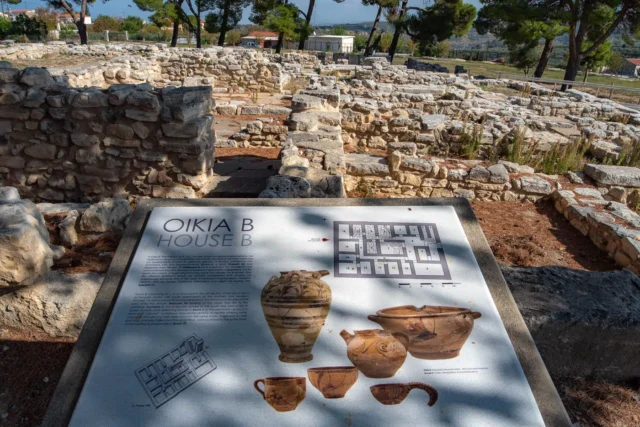
Ancient Tylissos
8:30 am - 3:30 pm
Tylissos, an ancient Minoan town located on the slopes of Mount Psiloritis in Crete, thrived between 1650 and 1200 BC. The town's strategic location on a major Minoan road contributed to its prosperity. Excavations have revealed three grand palaces (Megaron A, B, and C), showcasing remarkable Minoan architecture. Megaron A, the best-preserved, features a central courtyard, apartments, and storage rooms.
Significant finds include bronze cauldrons, a bronze figurine, Linear A tablets, and miniature frescoes comparable to those found in Knossos. These discoveries suggest Tylissos was a center for bronze working and played an important role in the Minoan civilization. Numerous tombs dating back to 1400-1200 BC have also been unearthed, containing painted sarcophagi, vases, jewelry, and seals, offering further insights into Minoan burial practices and culture.
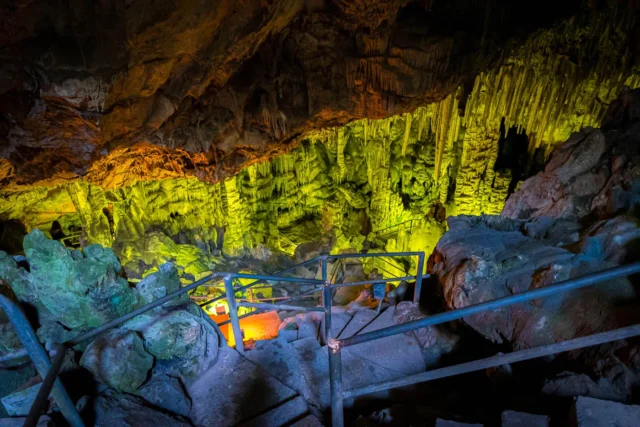
Dikteon Antron cave
8:00 am - 8:00 pm
Dikteon Antron, also known as Psychro Cave, is a site of significant mythological and archaeological importance located on Mount Dikti in Crete.
The cave's history spans from the Neolithic to the Roman period, primarily as a religious site. In Greek mythology, it is renowned as the birthplace of Zeus.
The cave's interior features a wealth of stalactites and stalagmites, as well as a lake. Archaeological excavations have uncovered artifacts from various periods, attesting to its continuous use by humans. Open to the public, visitors can explore the cave's chambers and witness its geological formations.

Epano Archanes archaeological museum
Established in 1993 within a neoclassical building in Archanes' Tzami district, the collection presents artifacts unearthed locally, including from the significant Minoan palace site. It features ceramic and stone vases, tools, and figurines illustrating Minoan daily life, customs, and art. A notable exhibit reconstructs a Minoan cemetery with replicas of ossuaries and burial goods. Copies of major finds like frescoes and jewelry, secured in the Heraklion Archaeological Museum, are also displayed. It offers context for the Archanes area's rich history.

Festos (Phaistos)
8:00 am - 8:00 pm
Phaistos, a significant Minoan city in Crete, second in importance to Knossos, located in the Messara Plain. It dates back to 4000 BCE with a palace built in 1900-1700 BCE. The city was destroyed by an earthquake around 1700 BCE and rebuilt with a larger palace. Phaistos had connections with Knossos, Hagia Triada, and Gortyn. Important findings include the Phaistos Disk, Kamares Ware, and architectural remains. After a decline, Phaistos was reoccupied in the Hellenistic period (c. 323-67 BCE) until conquered by Gortyn.
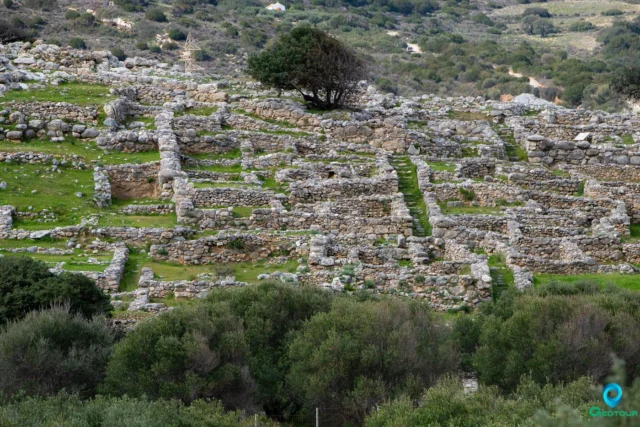
Gournia Minoan settlement
8:30 am - 3:30 pm
Gournia, a Minoan town on Crete's north coast, presents a complete example of a small settlement.
Excavations, starting with Harriet Boyd Hawes, reveal houses, a palace, and a street network, reflecting Minoan urbanism. The site's history spans from the Neolithic to Late Minoan periods, witnessing growth, destruction, and limited reoccupation. Discoveries include artifacts, cemeteries (Sphoungaras, North), and architectural features like the 'Shore House,' suggesting maritime connections. The town's layout, with a main street and organized blocks, highlights urban planning. Gournia's cultural and economic context includes regional trade and religious practices. Ongoing projects reexamine its architecture, offering insights into Minoan civilization and its connections to other Aegean settlements.

Knossos archaeological site
The Palace of Knossos, located on the Kephala hill south of Heraklion, Crete, is an important site of the ancient Minoan civilization. Occupied since around 7000 BCE during the Aceramic Neolithic period. The First Palace, built during the Middle Minoan IB-IIA period, represents a significant shift in Minoan society from a clan-based structure to a hierarchical one. This monumental building, covering nearly 10,000 square meters on the ground floor alone, served as a hub for administrative, storage, and cult activities. The First Palace also introduced innovative features like storage magazines, showcasing the society's wealth and resources. The New Palace emerged after a massive earthquake that occurred at the end of the Middle Minoan IIIA period, the palace underwent major reconstruction in the Middle Minoan IIIB period. Around 1450 BCE, widespread destruction occurred across Crete, affecting palaces and settlements. While Knossos suffered damage, it wasn't destroyed like other palaces. This period saw the introduction of Linear B, an early form of Greek script used by the Mycenaeans, suggesting their presence at Knossos. The final destruction of the palace, possibly in Late Minoan IIIA2 (1325-1300 BCE), left it deserted, but the town continued to exist. Knossos continued to be inhabited during the Classical, Hellenistic and Roman periods. Two basilicas from the First Byzantine period indicate that the city was still active during this time. Knossos appears to have followed the fate of other urban centers in Crete and declined early.
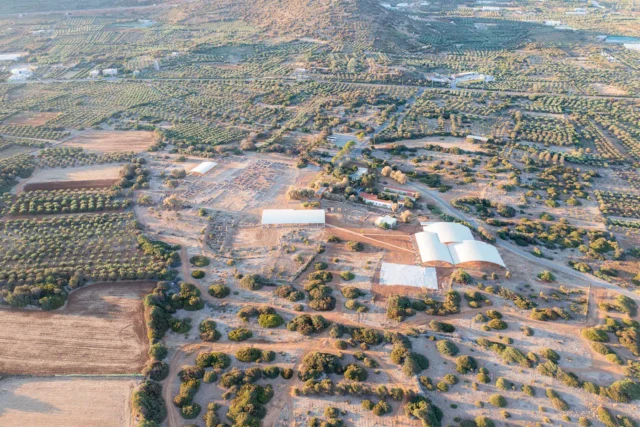
Malia Minoan Palace
8:00 am - 6:00 pm
The Minoan archaeological site at Malia, located on the northern coast of Crete, is a significant site for understanding the Bronze Age civilization. The Palace of Malia is the third largest Minoan palace discovered. The palace and surrounding town and cemeteries offer a glimpse into the complex social, political, economic, and religious structures of Minoan society. The area was inhabited as early as the Early Neolithic period. The first monumental architecture at Malia, often referred to as the Old Palace, dates to the Early Minoan IIB period. This structure, or group of structures, was built around a large open space, sharing the same alignment as the later palace. The second palace, whose ruins are visible today, was built in the Late Minoan IA period, around 1650 BCE. It was constructed on the ruins of the Old Palace, inheriting its basic layout and orientation. The palace's central court, a defining feature of Minoan architecture, is oriented north-south. The New Palace at Malia met its demise around 1450 BCE, coinciding with the destruction of other Minoan sites across Crete. The cause of this widespread destruction remains a topic of scholarly debate.

The Archaeological Museum of Agios Nikolaos
8:30 am - 3:30 pm
The Archaeological Museum of Agios Nikolaos, Crete, houses a remarkable collection of artifacts spanning from the Neolithic period to the end of the Greco-Roman era. Established in 1970, the museum showcases the evolution of art and culture in Eastern Crete. The collection includes finds from the Early Minoan cemetery of Agia Fotia and the Minoan palace of Malia. One of the most renowned objects is the "Goddess of Myrtos," a unique libation vessel from the Pre-palatial period. The museum's rectangular building features eight exhibition halls arranged around a central atrium, facilitating a clear and intuitive flow for visitors. The museum actively engages with the public through temporary exhibitions and educational programs. It is open from 08:30 to 15:30, closed on Tuesdays. Ticket prices vary depending on the season, with combined tickets available for multiple archaeological sites and museums in the region.



